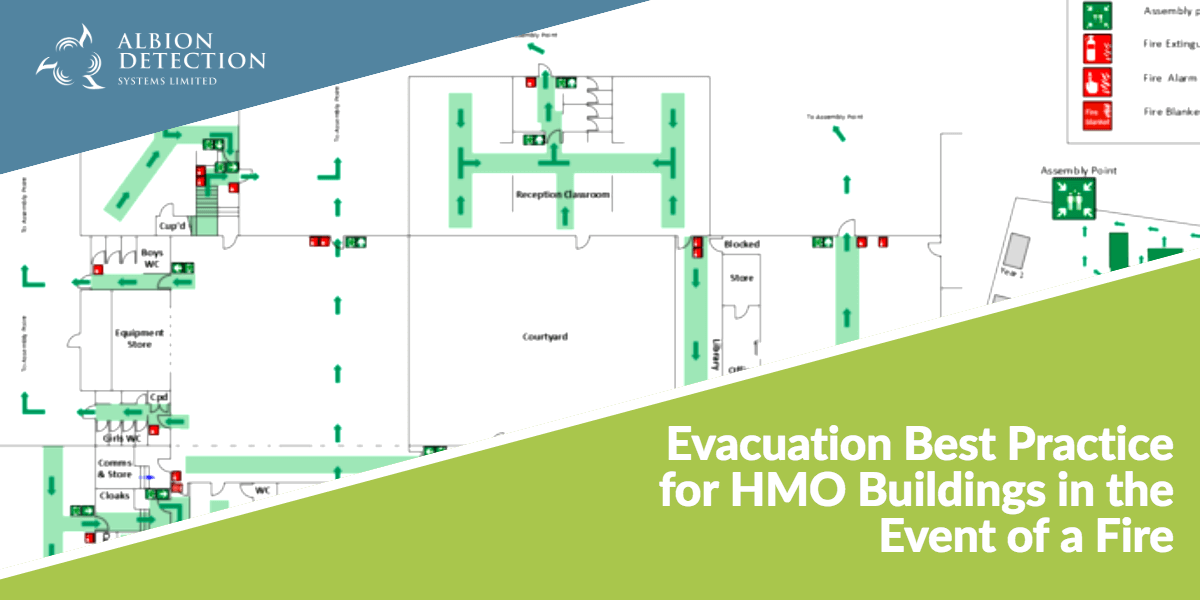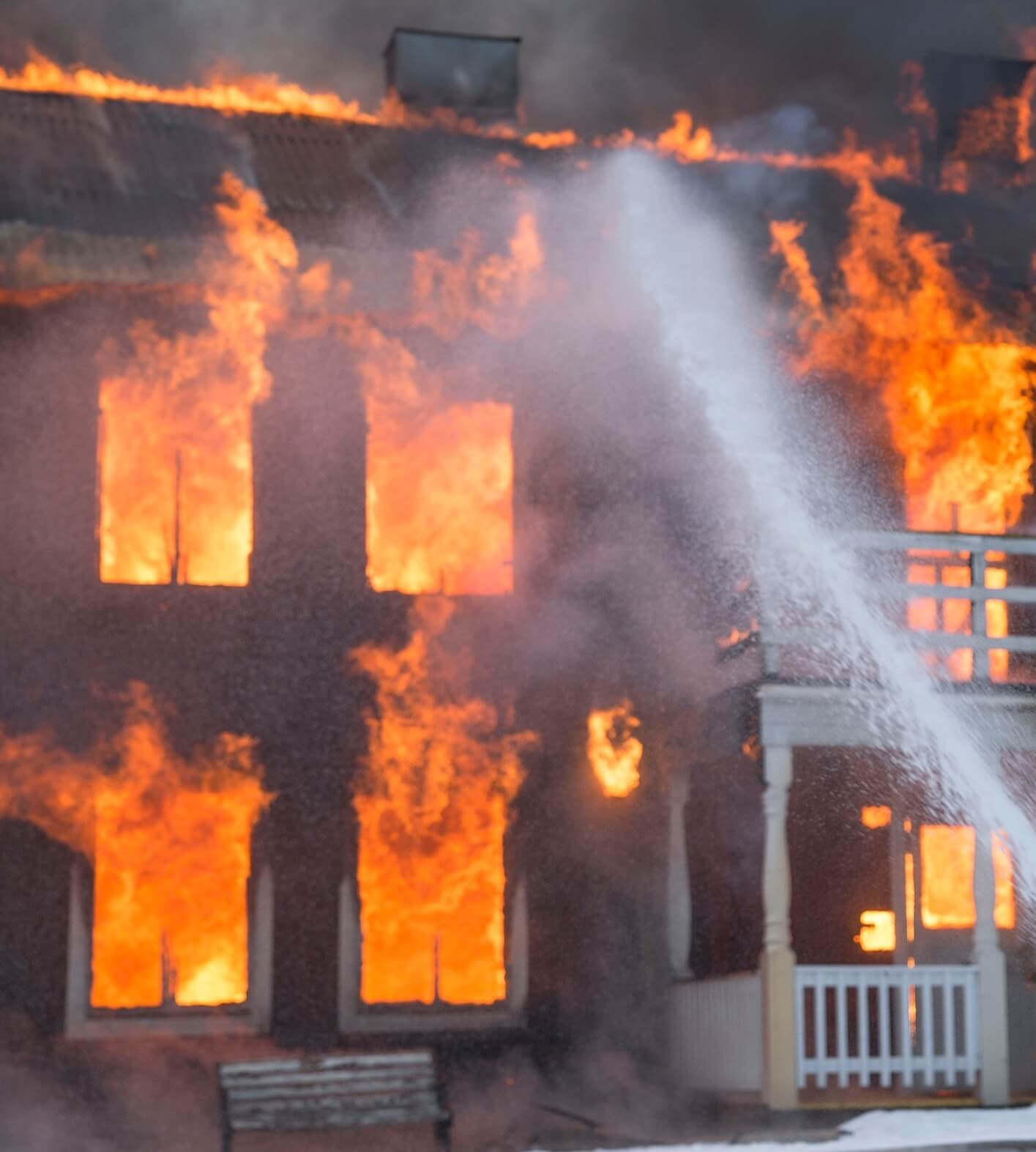
Introduction: Evacuation Best Practice for HMO Buildings in the Event of a Fire
What is Evacuation Best Practice for HMO Buildings? If the worst-case scenario should come to pass and an HMO requires an evacuation of tenants, there are specific measures the landlord must take to ensure this is possible and safe.
Failing to provide safe access and egress from a property contravenes the landlord’s responsibilities for fire safety in multi-occupancy buildings and could result in legal ramifications.
However, ensuring tenants can quickly and safely evacuate to safety is not a demanding process and simply requires some proactive work on your part if you are a landlord of an HMO.
By taking the right actions such as conducting an in-depth specialist HMO fire risk assessment and putting an appropriate policy and route in place, you should be able to mitigate any issues when it comes to evacuation.

Evacuation Best Practice for HMO Buildings – When To Stay Put
‘Stay put’ fire safety guidance for HMOs has been the model the fire service has used for more than half a century and is still the most effective solution when a fire is small and contained to a single residence.
HMOs that were built or renovated in accordance with the Building Regulations 1991 guidelines can – and do – often make use of the stay put methodology.
This is because buildings built or converted to meet these regulations are designed to contain and slow the spread of fire.
Their construction is targeted at doing just this.
Human nature is, understandably, to flee from danger, but this can have its own dangerous effects, often exacerbating the problem when fire safety becomes a concern.
The reason stay put was brought into use in the first place was to minimise panic and enable the fire service to quickly access and move about a building where a fire is present.
Hallways and stairwells full of scared people are hugely dangerous and also hinder firefighters from getting where they need to go.
Evacuation Best Practice for HMO Buildings – When To Evacuate
In the case of a persistent, spreading fire in an HMO, all residents will need to be evacuated.
The key to achieving a safe and orderly evacuation begins way before a fire is present and starts in the fire risk assessment phase.
An in-depth and robust HMO fire risk assessment will enable you to identify – beforehand – the best fire alarm system for your HMO.
This could take the form of individual smoke and CO detectors in each flat, ‘hush button’ options to avoid false alarms or even an addressable system that will provide visual and audible information for evacuating tenants.
A fire risk assessment will also identify the best access and egress points for evacuation best practice for HMO buildings.
For most HMOs, this will take the form of an entrance at the base of a single, central staircase.
But if the building is more complex or very large, you will have to assess which egress point is closest and safest for evacuating tenants.
This means taking a strict, proactive approach to keeping access and egress points clear of obstructions and easy to access.
This isn’t just about enabling residents to evacuate as safely and quickly as possible, it’s also about making sure the fire service can gain quick access to the property and operate as they need to.

Evacuation Best Practice for HMO Buildings – Phased Evacuation
In cases where a large HMO requires evacuation, phased evacuation is the method that gains the safest results and reduces clogged stairs and doorways.
In this scenario – which is often used in hospitals – certain ‘zones’ will go into full evacuation, with residents in rooms or floors adjacent to the evacuation zone remaining in place.
If the fire then spreads, the evacuation zone will expand to the next room or floor and so on.
Phased evacuation ensures that residents are always within a ‘safe zone’, whilst also moving people away from areas of danger.
This is also a good system for avoiding ‘one out, all out’ evacuations where it may not be necessary for all residents to leave the building.
This makes it easier for the fire service to get to the zone of fire and take quick, decisive action, without having to shepherd multiple residents to safety when they are already perfectly safe in their flat.
Evacuation Best Practice for HMO Buildings – Your Choice, Your Responsibility
When it comes to evacuation and how successfully the process goes, ultimate responsibility rests with the landlord and the actions they have taken as a result of their fire risk assessment.
If done properly – and, perhaps, with outside, expert help – evacuation best practice for HMO Buildings procedures should be clear and easy for everyone to follow.
Without this work, however, the process can be chaotic, disruptive to the fire service and potentially dangerous in and of itself.
As a landlord of a HMO the burden of fire safety rests with you.
You need to be able to say that you assessed every risk you could find and ensured safe quick access, egress and evacuation guidance.
It’s also worth bearing in mind that tenants are people and it’s natural for human beings to take matters into their own hands when they feel endangered.
That’s why it’s vitally important to have the right procedures in place because you never know how people will react during a fire.
By providing clear, simple guidance, your tenants will feel reassured and know exactly what to do if a fire does occur.
What’s Your Opinion?
Ready To Get Fire Protection Focussed?
Do you need more guidance or information about Evacuation Best Practice for HMO Buildings? Get in touch with us to book a specialist fire assessment or speak to one or our HMO fire safety experts.



